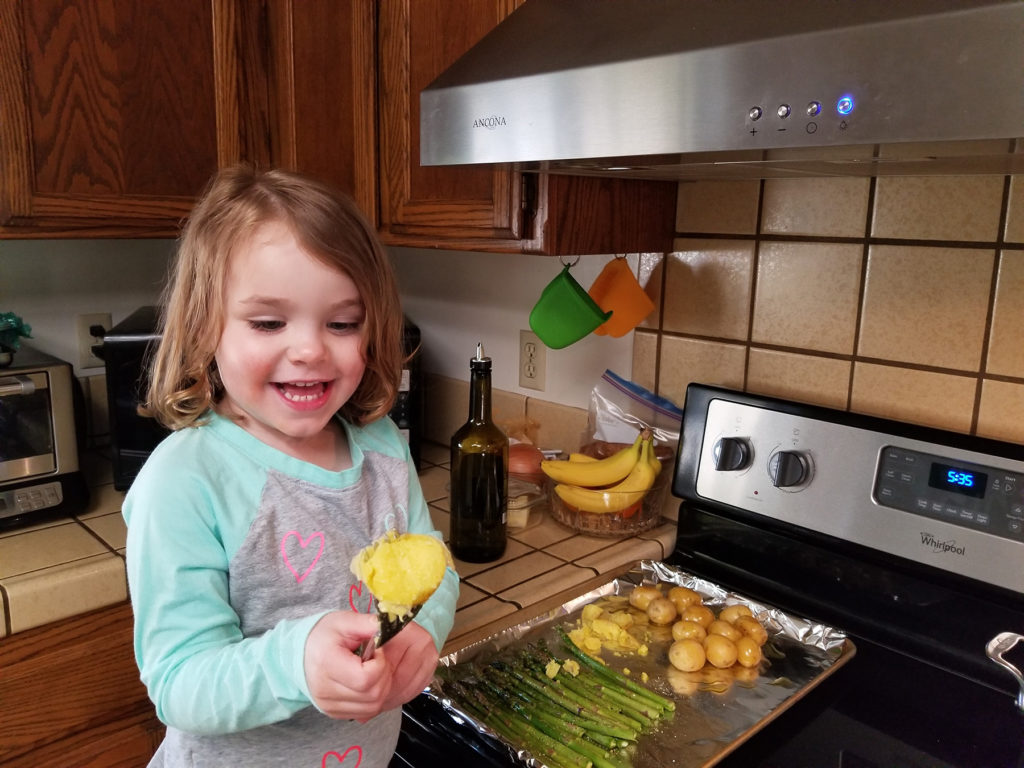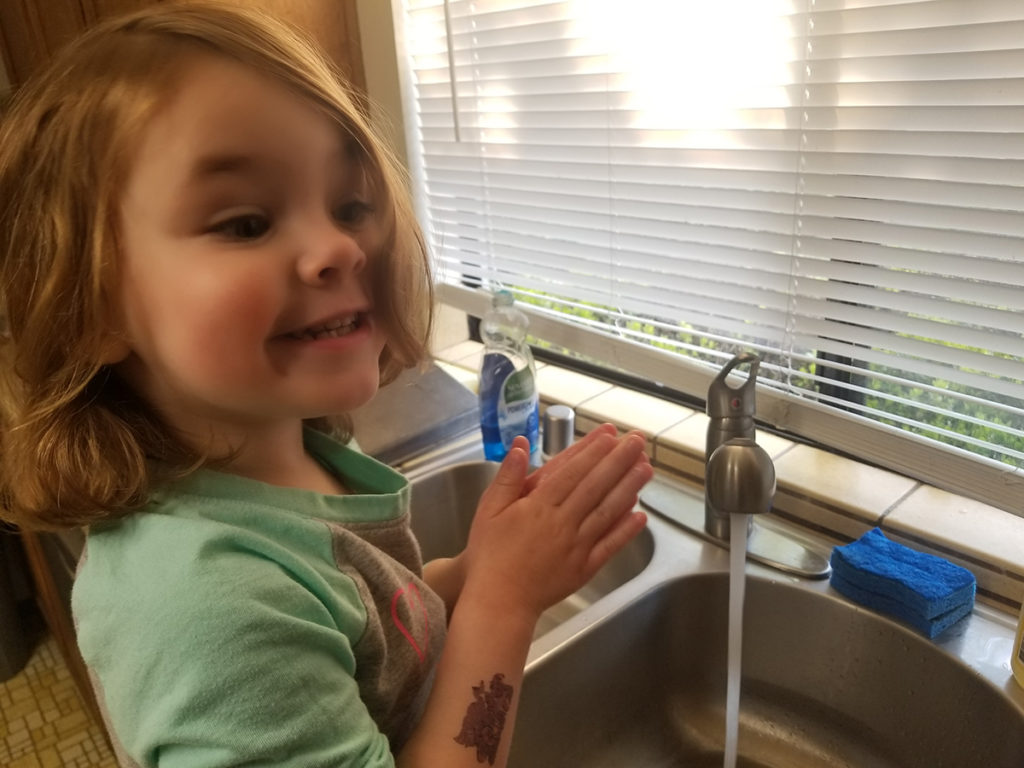Chris Brunner – March 31, 2020
I’m filling my shelter-in-place days with stress-releasing cookie baking binges. Breakfast one day consisted of three homemade gluten free, dairy free, chocolate chip cookies. My hope is that exercising to YouTube yoga and ab workouts, along with afternoon walks through the park, will counteract the carb intake. My refrigerator and pantry are well stocked, yet I was thrilled last week to order takeout pizza and the Thai takeout dinner that followed a few days later had me jumping for joy not to have to cook.
As we struggle to accept the challenges of sheltering-in-place and adjust to new patterns, stubbornly wanting to hold onto comfortable habits, while recognizing the sacrifices that are necessary for us to safely get through the COVID-19 outbreak crisis, it’s important to take stock. The safety and nourishment of our families is a top priority, making this an important time to review the recommended steps for food safety whether cooking at home or getting takeout.
At-Home Food Preparation

Amelia, daughter of Victor and Nicole Nisson of Davis, is having a great time helping prepare meals and learning important food safety steps.
As reluctant as I am to cook, one of the bright sides of sheltering-in-place has been slowing down the pace of life and cooking meals with my husband and trying new recipes. One thing we can both agree on is adhering to food safety rules. When preparing and cooking food at home we are careful to practice the four steps to food safety: 1) Clean: Wash Hands, Utensils, and Surfaces Often; 2) Separate: Don’t Cross Contaminate; 3) Cook to the Right Temperature; and 4) Chill: Refrigerate and Freeze Food Properly. Not only does Food poisoning send 128,000 Americans to the hospital each year, it can also have long-term health consequences.
Other useful resources for answering questions about the coronavirus and food safety are:
FDA Coronavirus Disease 2019 (COVID-19)
California Department of Food and Agriculture
North Carolina State Extension
California Dairy Quality Assurance Program
Takeout
Our hometown newspaper encouraged us to help the local economy while sheltering-in-place. They suggest a good way to do that is supporting local restaurants who are open for delivery and takeout. The decision between cooking at home or getting takeout thankfully remains an option at this point. It’s important to have the facts before us to make an informed decision. I choose takeout a few times a week. The USDA, when asked if we can get sick with COVID-19 from touching food, the food packaging, or food contact surfaces, if the coronavirus was present on it, answered, “Currently there is no evidence of food or food packaging being associated with transmission of COVID-19. Like other viruses, it is possible that the virus that causes COVID-19 can survive on surfaces or objects.”
A recent article in the What’s Cooking section of Sactown Magazine will help answer more of your questions about takeout. In the interview with WIFSS associate Dr. Erin DiCaprio, a virologist who specializes in community food safety at UC Davis, she answered questions about how to stay healthy and support local restaurants. DiCaprio recommends taking the food out of the container and putting it on a plate and washing your hands before you eat. Clean and disinfect counters or tables where the packaging was placed and be aware of all the surfaces that you touch. Wash your hands and as much as possible try not to touch your face.
Staying Connected and Being Grateful

Amelia sings the ABC song twice while washing her hands. She’s diligent about scrubbing between her fingers, her thumb, the back of her hands, and her wrists.
While we continue to work from home it’s nice to be able to stay in touch with our work colleagues through Zoom meetings and share stories of how we’re managing to keep our lives balanced. We thank Amelia for taking time from her art projects to pose for the photos and for her Mom, who is WIFSS team member, for being our remote photographer. Their family is taking walks and bike rides and going to the park but avoiding the playground equipment and instead running around on the grass, playing soccer, or running or rolling down the hills. The wonders of technology are keeping all us connected, including Amelia is having playdates using FaceTime and doing kids yoga on YouTube.
Let’s be polite out there, practice social distancing, and be smart about our hygiene. Let’s tell the front-line people at our local neighborhood grocery store thank you. They are working tirelessly, patiently, and politely to provide us with the food and supplies we need.
Wouldn’t it be something if this shared crisis instilled in us some good shopping and cooking habits that we can continue after our sheltering-in-place days. For instance, wiping the handle of the shopping cart with a sanitized wipe, not touching multiple pieces of fruit before we decide on just the right one, washing and sanitizing our reusable bags more often, using a hand sanitizer after we get back in the car before touching the steering wheel, and washing our hands after we’ve put everything away after we get home. When it’s time to prepare and cook the meal let’s definitely continue to follow the 4 key steps in food safety recommended by the USDA — clean, separate, cook, and chill.
Stay safe out there and do enjoy some comfort baking. I highly recommend Guittard semisweet chocolate baking chips. I know it’s tempting to taste a bit of the homemade dough for cookies, cakes, and bread. We’ve all licked the beater! Try and steer clear of the temptation. The CDC has this advice – Say No to Raw Dough.

